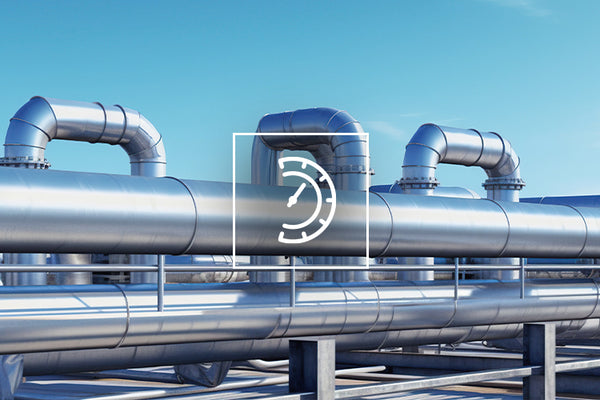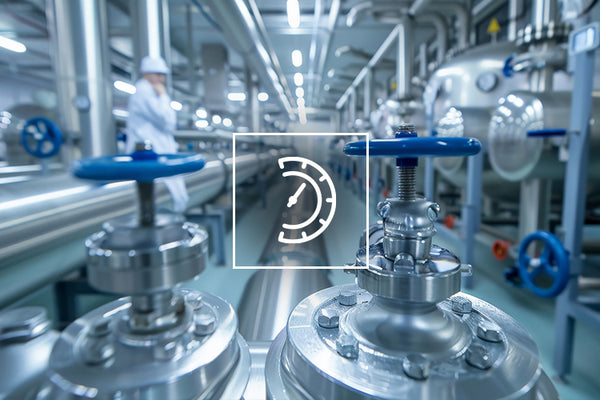- Home
- Pressure
- Air pressure
- Differential pressure switch, pressure switch
Differential pressure switch, pressure switch
Our differential pressure switches are used for monitoring positive, differential and negative pressure in air ducts, supply or exhaust air systems, for filter and flow monitoring and for controlling fans and air dampers or as limit value controllers.
Thanks to their DDC-compatible, potential-free, gold-plated changeover contacts, these pressure sockets support a wide range of applications and are easy to install using the mounting kits supplied. Our pressure sockets are designed for reliable operation at temperatures from -30 to +85 °C / -22 to +185 °F and in humid environments with up to 90 % RH, ensuring optimum functionality in a wide range of environments.

What are differential pressure switches, pressure switches and pressure boxes?
A differential pressure switch (often called a pressure switch) monitors and responds to the pressure difference between two points, often used in ventilation ducts or between environments to ensure proper airflow and filtration.
A differential pressure switch is a device that monitors and responds to the pressure difference between two points. It is used to control and ensure the proper functioning of various systems by detecting whether the pressure difference reaches a predetermined point.
Inhalt
Differential pressure switch vs. differential pressure transmitter Areas of application for differential pressure switches/pressure sockets Comparison of mounting types Frequently asked questions about differential pressure switches and pressure transmitters Conclusion on differential pressure switches and differential pressure transmittersDifferential pressure switch vs. differential pressure transmitter
Both devices detect pressure differences - but they work differently:
Differential pressure switch:
- Switches at a defined pressure difference
- No measured value, only on/off
- Cheaper and simpler
- Ideal for filter monitoring, fans, safety interlocks
Differential pressure transmitter:
- Measures and transmits continuously
- Provides precise values for process control
- More expensive, but more versatile
- Ideal for automation, building management systems (BMS), VAV systems
Applications of differential pressure switches / pressure sockets
-
Monitoring air filters
Differential pressure switches can detect when filters are clogged with dust and dirt. A clogged filter increases the pressure drop and when this drop reaches a preset threshold, the pressure switch can trigger an alarm or system response to indicate that the filter needs to be cleaned or replaced.
Fan control
Pressure sockets are also used to monitor the operation of fans. They can ensure that fans are working correctly by detecting the pressure difference caused by the operation of the fan. If the pressure difference is too low, this could indicate a failure or malfunction of the fan, requiring maintenance.
Monitoring the duct pressure
In large HVAC systems, it is crucial to find the right Pressure within the duct to ensure efficient airflow. Differential pressure switches can help by controlling the Pressure in various sections of the sewer system and adjust the system controls if necessary.
System interlocks
Pressure switches can act as safety interlocks. For example, they can ensure that certain parts of the HVAC system, such as heaters or coolers, are only operated when the fan is working properly to prevent overheating or inefficient cooling.
Fire and smoke control systems
In the event of a fire, it is critical to control the spread of smoke through HVAC ducts. Differential pressure switches can activate smoke dampers that close to prevent the spread of smoke through the building.
Variable air volume systems (VAV)
In VAV systems, the air flow is varied based on demand. Differential pressure switches can control the Pressure in these systems to control the volume of air delivered to different areas, optimizing energy consumption and maintaining comfort.

Comparison of mounting types
Differential pressure switches can be installed in various ways. The illustration shows three typical installation approaches. Read a brief description with a suitable example for each application:
- Monitoring of the subatmospheric pressure (A):
This type measures negative pressures relative to the atmosphere, for example in clean rooms or laboratories, to prevent contamination. The differential pressure switch (P2) is connected to the room, while the reference side (P1) remains open to the atmosphere. If the negative Pressure an alarm is triggered to signal an impairment of the room integrity. - Filter monitoring (B):
To ensure air quality and efficient operation, the differential pressure switch is installed with connection P1 upstream and connection P2 downstream of the air filter unit. This allows the HVAC system to detect filter particles that can cause a pressure drop and obstruct the air flow. The switch triggers when the pressure drop exceeds the acceptable range, indicating a need for filter cleaning or replacement. - Fan monitoring (C):
In transit systems or industrial ventilation, it is important that fans move air effectively to ensure air quality and safety. The differential pressure switch measures the air pressure downstream of the fan (P1) and the intake pressure upstream (P2). It continuously monitors the pressure difference to check the operating efficiency. If the Pressure falls below a certain threshold value, the switch is triggered, which indicates a malfunction or wear of the fan and requires maintenance.
Frequently asked questions (FAQ)
- How exactly does a differential pressure switch work?
It compares two pressure points. If the pressure difference exceeds a set value, the contact switches - e.g. to trigger an alarm or a control. - Where are differential pressure switches used?
In HVAC systems, filter systems, clean rooms, fire protection systems, industrial processes, laboratories and wherever pressure differences are crucial. - Is it possible to adjust the switching point?
Yes, many models offer an adjustable threshold via a calibration screw or digitally. Pay attention to the manufacturer's specifications. - Which is better: differential pressure switch or transducer?
It depends on the intended use. A switch is sufficient for simple alarms, but a transmitter is more useful for control technology and analysis.


Conclusion
Discover differential pressure switches from S+S nowDifferential pressure switches are robust, tried and tested components for Pressuremonitoring in ventilation and filter systems. They increase operational safety, facilitate maintenance and are indispensable in many applications - from building technology to industry.
Differential pressure switch from S+S Regeltechnik stand for precision, reliability and quality "Made in Germany". As a manufacturer, we develop and produce our devices specifically for professional use in HVAC, filter and industrial applications.
You can rely on over 20 years of experience as a manufacturer in building technology.We also manufacture individually
Do you have special requirements? As a manufacturer with our own production in Germany, we are always able to produce outside the standard range.
contact
Secure payment methods
Do you have a question? We will be happy to help you:
+49 911 519 470Mo. - Fr. 7.00am - 5.00pm CEST
- Choosing a selection results in a full page refresh.
- Opens in a new window.



















